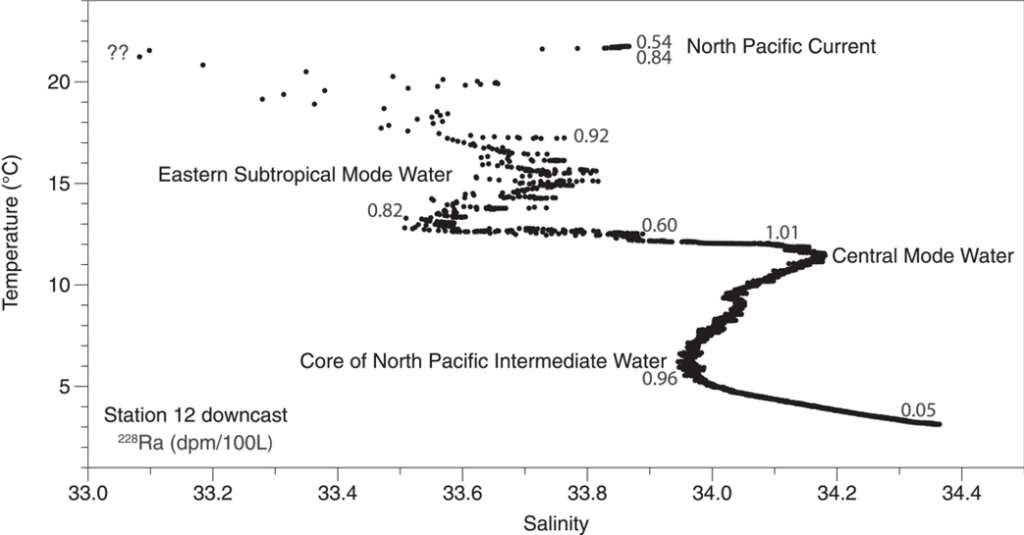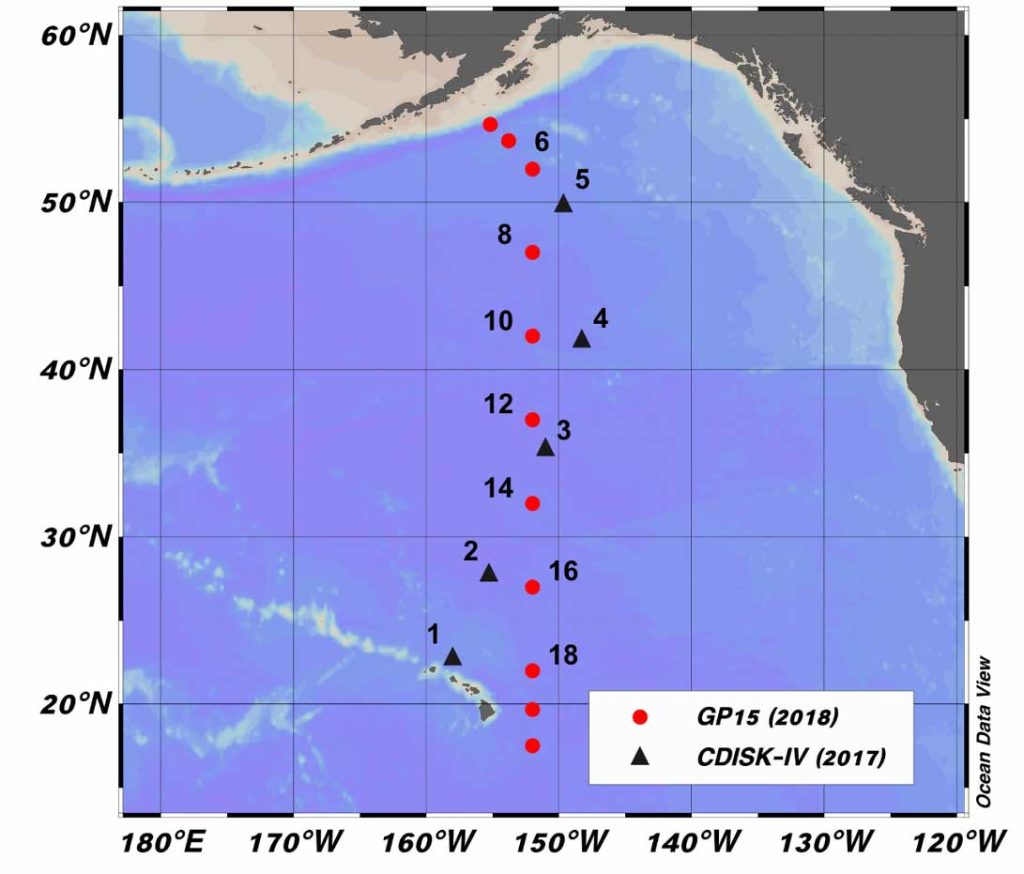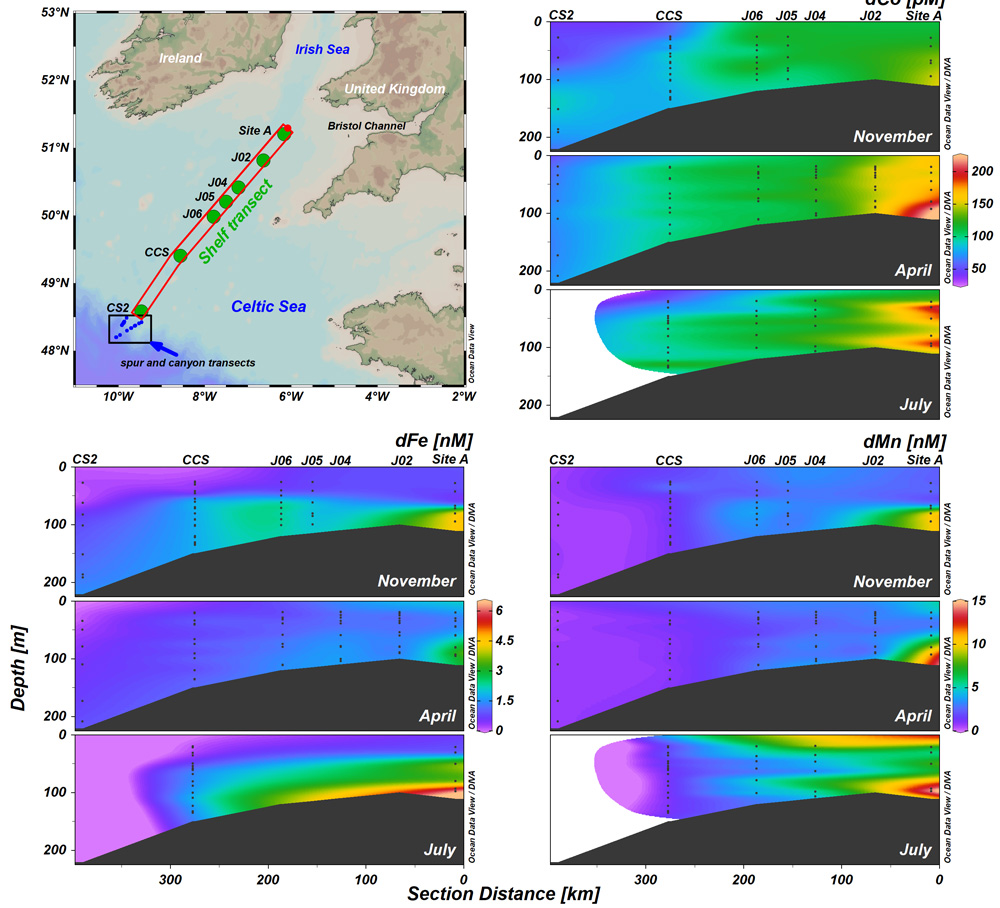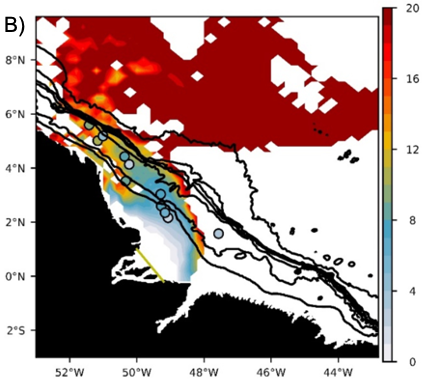Naturally occurring radium isotopes allow the study of short and long term processes in the ocean. Radium is produced by the decay of thorium mainly in the sediments but also in the water column. In the ocean, thorium is produced by the decay of uranium directly present in the water column. Thorium have a strong affinity for particles and is adsorbed on the particles. Then thorium is transported to the bottom and slowly accumulates in the sediments. Having an affinity for the dissolved phase, radium, produced in the sediments, diffuses to the water column at the margins and into the deep ocean. Therefore, radium concentrations are generally high near the sediments, in freshwater discharges to the ocean and in circulating waters through the sediments, and are low in the open ocean. Water masses in contact with sediments become enriched in radium. Radium isotopes can be used to trade different processes.
The isotopes radium-224 (224Ra) and radium-223 (223Ra), because of their short half-lives, remain in the ocean about 2 or 3 weeks and 2 months, respectively. They are detected mainly at the interfaces (sediment, surface, margins. . .) and in the first 100 km offshore in the mixed layer. These two isotopes can be used to quantify freshwater discharge fluxes at sea and circulation waters through sediments, to estimate the residence time in the coastal zone, horizontal transports from the coast to the open sea gradient.
Radium-228 (228Ra) has a longer half-life which allows it to reach the open ocean. 228Ra can be measured up to about 30 years after its release from the sediments. The highest activities of 228Ra are observed at the surface due to surface transport from continental margins, rivers, freshwater discharges, and recirculating water in the sediments. Fluxes of 228Ra from springs and, more generally, from continental margins to the open ocean can be converted to fluxes of trace elements such as iron.
Radium-226 (226Ra) has the longest half-life. 226Ra activities increase with depth, which is mainly explained by diffusion from deep sediments. 226Ra activities vary from one basin to another depending on the water masses and their origins. Bottom waters get enriched with 226Ra along the path of the thermohaline circulation between the North Atlantic and the North Pacific. The transit time of water from the North Atlantic to the North Pacific is about 1000 years. This transit time is similar to the half-life of 226Ra and makes it a potential tracer of this global circulation and water masses.
Find below a summary of main GEOTRACES findings and products on radium research:
Atlas
North Atlantic Ocean:
Pacific Ocean:
3D scenes showing the distribution of dissolved radium-226 and radium-228 in the North Atlantic and the Pacific. In warm colours (red, orange, etc.) you can view high activities of dissolved radium.
(The images below may not show if you are using Safari. Please change your browser if necessary).
Data
Data is available to download after registration here: https://geotraces.webodv.awi.de/login
Discoveries include:
Below you can find a list of science highlights of main GEOTRACES discoveries on radium research:

Science Highlights
North-South radium-228 section in the Pacific Ocean
Moore and colleagues present results from radium-228 along the U.S. GEOTRACES Pacific Meridional Transect (GP15).

Science Highlights
First direct measurement of actinium (but also radium and thorium) distribution coefficient values in marine sediments
Actinium-227, radium-226 and radium-228 profiles in sediments were measured and modeled at 5 stations in the Northeast Pacific…

Science Highlights
A detailed study of the land-ocean input of dissolved iron, manganese and cobalt in the Northeast Atlantic Ocean
Chen and co-authors propose a detailed study of the spatial and seasonal distributions of dissolved iron, manganese and cobalt in the Northeast Atlantic continental margin.

Science Highlights
Radium-224 and radium-223: powerful chronometers to estimate the residence time of Amazon waters on the Brazilian continental shelf
In this study, radium is used as a tracer for the waters of the Amazon that mix with those of the Atlantic Ocean.
List of publications
Scroll down to view the list of GEOTRACES publications on radium isotopes:
